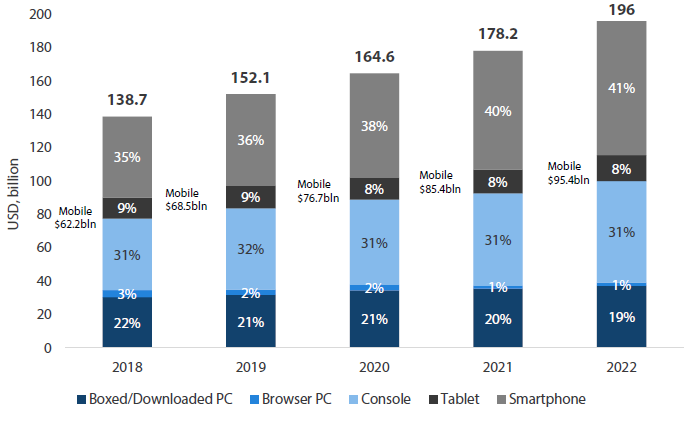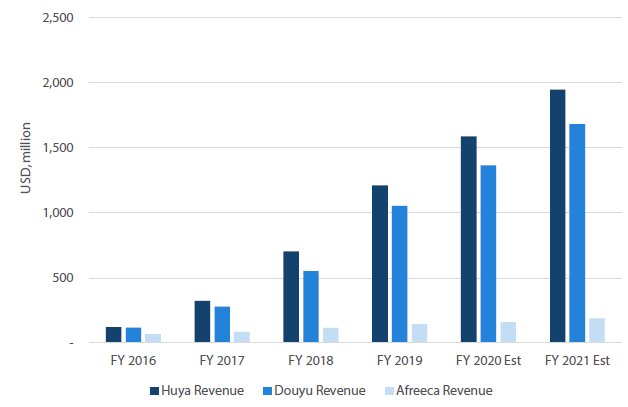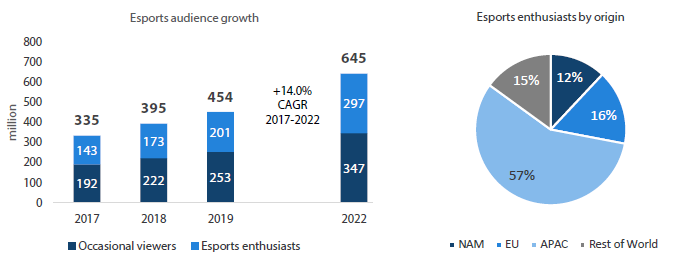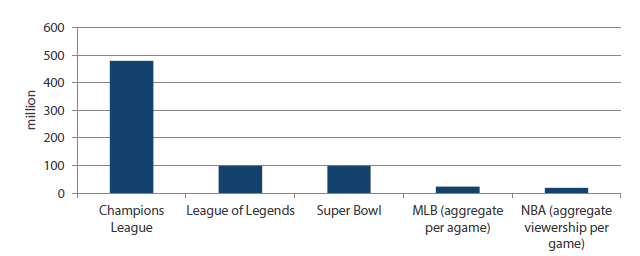We bet you have never heard of Mats Steen. There’s only a slightly better chance you’ve heard of his online nom de guerre—“Lord Ibelin Redmoore”, or “Jerome Walker”. Mats, a native of Norway, was an avid player of World of Warcraft (WoW), an online role-playing game released in 2004 which boasts a global fan base numbering in the millions. "We thought it was all about the game. And just that. We thought it was a competition that you were supposed to win. In the course of the last 10 years of his life, Mats played between 15,000 and 20,000 hours," Robert, Mats’ father, said. "That's equivalent to more than 10 years' full-time employment".
Confined to a wheelchair, Mats spent much of his time gaming in his parents’ basement, leading what they thought was an isolated life. But at his funeral, the leader of the group Mats was part of in WoW said, "While we are gathered here today, a candle is being lit for Mats in a classroom in the Netherlands, a candle burns in a call centre in Ireland, in a library in Sweden there is a candle lit, he is remembered in a little beauty parlour in Finland, a municipal office in Denmark, many places in England… I met Mats in a world where it doesn't matter a bit who you are, what kind of body you have, or how you look in reality, behind the keyboard.”1
1 Source: https://www.bbc.com/news/disability-47064773
In many ways, this sums up everything notable about electronic gaming, or e-gaming, and why it is on the cusp of huge growth. But let’s start at the beginning.
From Atari to Epic Games…
Video games have been around since the mid-1950s, but every so often, they have gone through major transformations that redefined the user experience.
As early as the 1960s, American inventor and engineer Ralph Henry Baer, now widely regarded as the father of video games, was already convinced that TV could be interactive, rather than just a passive form of entertainment. By 1970, technology had reached a stage where transistors could replace clunky vacuum tubes that were prone to blowing out. And for just USD 2,500, Baer developed the first (and admittedly, very basic) home video game console in 1972. This set the stage for arcade game classics such as Atari’s Pong and Taito’s Space Invaders. With the successes of the arcade era, consumers were longing for video game solutions at home. Advancements in technology allowed for the miniaturization of the arcade games that were the size of phone booths, and the new “consoles” were now small enough for the living room. And lo and behold, the home video gaming era took off. The main players of the arcade era, such as Atari, Sega and Nintendo, successfully ported their hit video games to consoles that could be played at home. As personal computers, another innovation of the late 1970s, became more popular, the likes of Commodore, IBM and Amstrad battled for the attention of consumers by offering more intricate games that were too complex for the consoles of that era to handle. The ever-growing popularity of games ushered in a raft of new game developers and publishers.
The growth of the internet in the 1990s introduced to the gaming world an element that was hitherto missing—connectivity. This offered two significant breakthroughs: first, gamers were now able to play online with other players based anywhere with a connection; second, game companies were able to “upgrade” the game through remote delivery of patches to users online, significantly reducing lead times to deploy games. Which brings us to the present day: as the coronavirus outbreak has caused social distancing to be the norm in many parts of the world and confined people to their homes, more people have been spending more time on video games. We think gaming is at the cusp of something hugely exciting, and a confluence of factors has finally come together to make this possible. We shall briefly discuss each factor.
1. Technological evolution
Video gaming has always relied on technology, and indeed, the story of gaming evolution is also a story of technological innovation. Now, with augmented reality (AR), virtual reality (VR), mixed reality (MR), artificial intelligence (AI), Cloud, mobile telephony (smartphones & 4G/5G), micropayments, and new business models at its disposal, gaming is poised for massive growth, both in terms of usage and monetisation potential.
Technological innovation has made notable progress over the past decade:
- Visual displays have significantly improved, with mobile phone screens boasting resolutions comparable to, or better than, full HD television screens
- 4G (and now, 5G) telephony has made data transmission significantly faster and more efficient
- Users are now able to complete micro-transactions within the gaming ecosystem
All in all, these factors have made mobile gaming a significantly more enjoyable experience for the user. Data from Newzoo, a games and esports analytics provider, shows they expect the mobile gaming market to grow by around 60% from 2018 to 2022.
Chart 1: Forecast of the global games market

Source: Newzoo, December 2019
The increasing maturity of AR and VR technologies is adding to the richness and sophistication of the gaming experience. AR involves an interactive experience in real world environments where objects in the real world are enhanced by both visual and computer generated data. The most famous example of a successful AR game is Pokémon Go, released in 2016 by Niantic games in conjunction with Nintendo. VR is AR’s older brother and has been around much longer. In fact, the first VR headset was created in the late 1960s. VR takes AR one step further and creates a fully simulated visual, audio and physical experience for users. With affordability, ease of use, and sophistication set to improve substantially in the future, the prospects for a richer gaming experience are close to reality. In fact, Hollywood studios now use game engines to render hyper-realistic CGI sets in movies.

Source: Shutterstock
Streaming is another emerging trend in gaming that has been made possible by technology (think cloud, sophisticated and dedicated bandwidth management). Gamers now can broadcast their game playing activity in real time to a live internet-based audience. In Asia, there are companies such as Huya and Douyu in China, and AfreecaTV in South Korea that focus on streaming games to an eager audience.
These three companies have benefited from the growth in streaming in Asia. Chart 2 shows their revenue growth in the last three years and their forecasted revenue growth. Chart 3 shows the significant growth in global e-sport audience, which has been led by Asia-Pacific.
Chart 2: Revenue growth and forecasted revenue growth
Source: Company reports, Nikko AM estimates, 2020
Chart 3: Esports is catching on…led by Asia-Pacific
Source: Newzoo, December 2019
2. A leading entertainment medium
The most popular video site in the world is YouTube, and some of its most watched content are recorded video game clips. Even in an environment where multiple forms of recreation compete for viewers’ eyeballs, e-gaming continues to gain share from traditional formats of entertainment, such as TV.
People like to look, touch, and feel they are part of the fantasy world, where they can suspend disbelief and constraints of the “real” world. This is why amusement parks such as Disneyland or Universal Studios are so enduringly popular. In this regard, gaming, enabled by the rapid advances in technology, is an infinitely more powerful medium than TV; the billions of minutes clocked on live streaming platform Twitch is testament. That governments around the world are focused on the risk of addiction or concerned about increasing myopia resulting from gaming is a reflection of the power of gaming.
Also, hitherto, games were developed with the gaming enthusiast in mind. This resulted in the exclusion of a large potential audience. The emergence of casual games (think Candy Crush, or Angry Birds) has accessed a much larger percentage of the population—those who are content playing a game for 15–20 minutes while riding the subway to work, or waiting for a friend at a café.
Some 1.7 billion households around the world watch TV, for an average of over 2.5 hours per day2; this is worth over USD 250 billion3. The gaming industry captures a sliver of that attention (on average), and racks up about USD 150 billion. If that share of attention rises to even a third, the opportunity is very large!
“We compete with (and lose to) Fortnite more than HBO,” noted Netflix CEO Reed Hastings, in the company’s letter to shareholders. Fortnite, an online video game launched by Epic Games in 2017, has now grown to more than 250 million players4 to Netflix’s 167 million5.
2 Source: https://www.statista.com/statistics/730428/tv-time-spent-worldwide/
3 Source: https://www.broadbandtvnews.com/2018/10/22/global-tv-revenues-grow-to-265-billion/
4 Source: https://www.businessofapps.com/data/fortnite-statistics/, data as of March 2019
5 Source: Netflix Q419 quarterly earnings report
3. Unrivalled versatility as a content format
In his blog, Mats Steen had written: "It's (his computer screen) not a screen, it's a gateway to wherever your heart desires.” In the e-gaming universe, the tools available to create user-generated content provides a dynamism that other recreation options lack.
If you were to watch a rerun of the sitcom Friends on TV, it would be exactly the same as it was when it was released. With a real-time game, a user has a different experience each time he or she plays the game. The sheer flexibility afforded to the user, and the ability for each user to design and/or determine their own experience implies that the opportunity to capture mindshare is practically limitless. Gamers can create and monetise their own game variants, or worlds or characters within a game. To point, Roblox and Minecraft each boasts over 1 billion hours of user activity every month.
Livestreaming and video on demand (VoD) add another layer of richness to the content. As an example, DJ Marshmello, one of the top global DJs, hosted a virtual concert within Fortnite in February which was attended by 11million users, some as their game character, with many more attending the concert via YouTube and Twitch. The line between real and unreal is blurring, and the gaming industry, and gamers, are richer for it, in our view.
4. Intellectual property (IP) resilience and translatability
Disney is arguably the gold standard for monetisation of IP (think memorabilia, movies, games, amusement parks, etc.). Gaming is well positioned to mimic this success.
Pokémon has been around for 24 years. In fact, Pokémon has now generated more revenue than any other media franchise, including the Marvel Cinematic Universe, Star Wars and Mickey Mouse, and amassed more than 1,000 consecutive episodes of television and more than two dozen films. The 2019 movie Pokémon Detective Pikachu racked up over USD 50 million on its opening weekend, and brought in over USD 400 million in total. Earlier in 2020, Sonic the Hedgehog brought in nearly USD 60 million on its opening weekend in the US. Netflix’s The Witcher, adapted from a video game based on a series of novels, became its biggest-ever original TV series when launched late in 2019. These examples are a far cry from the earlier forgettable attempts to port games like Mortal Kombat and Doom, both popular titles in the 1990s, to the big screen.
Success at the box office is evidence of gaming IP’s ability to now straddle different media without alienating the user base. Historically, the translation of games onto the big screen came with the risk of being perceived as selling out, and if the movie failed, it discouraged other similar attempts. With more sophisticated technology, that threat has now been diffused, and indeed, the opposite is true—it allows a game to reach a much broader audience, one that hasn’t necessarily ever played the game.
5. Gaming is pop culture
Gaming is more than just immersive entertainment. It is now a topic of conversation at the water cooler. This makes it “cool”. And what has catapulted gaming from a “geeky” activity to “cool” has been the rise of esports, a competitive form of e-gaming. In effect, esports allows viewers to watch gamers at play, either live, or recorded, and online, or through traditional television channels, in much the same way as viewers would watch a FIFA World Cup qualifier on TV.
As esports as a genre becomes more popular in terms of the content, experience, variety, and ubiquity, it is not inconceivable that you have as many “subscribers” as you would in gaming. Many of the viewers themselves are players and have an appreciation of the games involved. The rapidly emerging popularity has also been helped by increasing prize money pools contributed by both the developers and sponsors. In 2019 alone, USD 211 million was paid out as prize money for esports tournaments6. Dota 2’s 2019 championship tournament put up a USD 34 million prize pool, which was the largest in esports history. In the 2019 Fortnite World Cup championship, an annual esports tournament based on Fortnite,16-year-old Kyle Giersdorf walked away with USD 3 million, which is slightly more than what tennis star Novak Djokovic got for winning the Wimbledon final that same year. Djokovic is a household name; Giersdorf isn’t…yet!

Source: Shutterstock
6 https://win.gg/news/3387/these-are-all-of-the-biggest-esports-prize-pools-from-2019
Esports viewership numbers have steadily risen, and has now exceed that of Major League Baseball and National Basketball Association (NBA) in the US.
However, esports currently caters largely to an audience that is in some way already invested in the gaming ecosystem. In the coming years, the evolution of esports will allow people to watch gamers in action without necessarily playing the game, the same way they can enjoy watching sports on TV without necessarily having to play the sport. Thus, while esports revenue is still significantly lower than that of traditional sports, there is little doubt that global advertising agents will look to tap into esports as viewership grows rapidly.
Chart 4: Viewership of various sporting finals in 2019 (millions) 
Source: Nikko analysis, March 2020
The growth opportunity is massive, and Asia is at the centre of it all
Asia has a rich gaming heritage, counting gaming pioneers such as Nintendo of Japan among its ranks. Tencent needs no introduction, and neither does NetEase. There is a large, and ever-growing, cadre of game developers in China, South Korea, and the ASEAN countries. What’s more, 60% of the world’s population lives in Asia7, and most have leapfrogged straight into the smartphone era. China alone counts nearly 700 million mobile gamers, even as most Asian countries are yet to leverage high-speed data communication networks.
In the context of the larger gaming ecosystem, the semiconductor industries in Taiwan, Japan and South Korea are world renowned. Novel gaming monetisation models developed in Asia are being exported to “developed” markets. Esports has gained greater traction in Asia than it has elsewhere, as evidenced by Beijing’s Bird’s Nest stadium reporting a full house for the grand finale of the multiplayer online battle arena game League of Legends.
Of all entertainment media, gaming is shaped by technology most extensively, from hardware to software to in-game data collection and analytics to ad-tech. With technology adoption in Asia rising rapidly, and in pockets surpassing the rest of the world, it stands to reason that gaming too would see greater growth in Asia.
Chart 5: China’s mobile games market 
Source: Niko Partners, 2019
7 https://worldpopulationreview.com/continents/asia-population/
Prologue (not an epilogue)
Ralph Baer was finally recognised for his achievements, and awarded the National Medal of Technology in 2006 by US President George W. Bush. Perhaps, it is appropriate that he received the award only recently; it is a harbinger of the recognition that gaming, as industry, and as a critical part of the leisure economy, is set to receive in the near future.
In the words of Nintendo’s Shigeru Miyamoto, the creator of franchises including Mario Bros. and The Legend of Zelda, “Video games are bad for you? That’s what they said about rock and roll”.
About the Authors
Chu has been an avid gamer since receiving his first Nintendo in 1988 and has been closely following the e-gaming industry ever since.
Ashwin has a number of games installed on his mobile phone; he doesn’t play most of them, but his children do!



